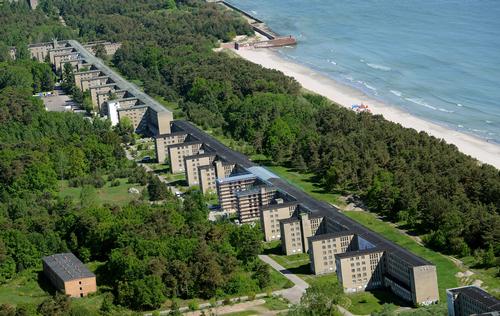18 Dec 2014
Hitler's seaside resort to be converted into tourism hub
BY Helen Andrews

Developers are cashing in on the redevelopment of a resort originally built by the Third Reich in the run-up to World War II – part of a Nazi vision for the future of tourism.
The project saw blocks of six-storey buildings, stretching 2.8 miles (4.5km), erected on the Baltic Sea and nicknamed the ‘Colossus of Prora’. Construction of the 10,000-key complex slowed during WWII and it was briefly claimed by the Red Army, before being turned into barracks for the East German military.
After reunification, historic preservationists and government officials determined the complex was too expensive and architecturally significant to tear down. The site was sold off in various blocks to different developers.
A youth hostel opened in part of the complex – now known as New Prora – in 2011 and there are plans to build a 100-bedroom hotel and spa. Other parts of the site will be transformed into luxury beachfront flats – half of which have been sold already, according to The Independent.
Developed in the 1930s by Robert Ley, a top Hitler lieutenant who led the Nazi 'Strength Through Joy' effort, the site’s modern-day investors are being criticised for 'cashing in' on a Nazi landmark and fulfilling the Third Reich’s plan to turn the colossus into a giant tourism hub.
While recriminations of the Third Reich are ever-present in Germany, the question of what to do with remaining Nazi architecture has not been answered. Some structures remain as testaments to the regime, while others have been turned into offices and army barracks, among other uses.
Another transformation project can be found in the Eifel region of western Germany. A former Nazi training ground is undergoing a US$52m (€42m, £33m) revamp, adding a convention centre and observation deck. The facility’s website states: “We don’t consider leisure activities and taking a critical look at the history to be irreconcilable.”
The German government, however, is effectively subsidising sales at the New Prora development – allowing buyers of luxury apartments subject to German income tax to receive federal credits worth half the purchase price of a unit. Without these reductions, prices in the development range from US$100,000 (€81,000, £64,000) to US$1.3m (€1m, £0.8m).
While historical architects advocate leaving Nazi architecture to decay, Gerd Grochowiak – managing director of one of the site’s developers Iris Gerd real estate – believes there is nothing wrong with the commercialisation of New Prora. “[The site] was always about tourism, so it doesn’t have such a negative history,” said Grochowiak.
Close Window